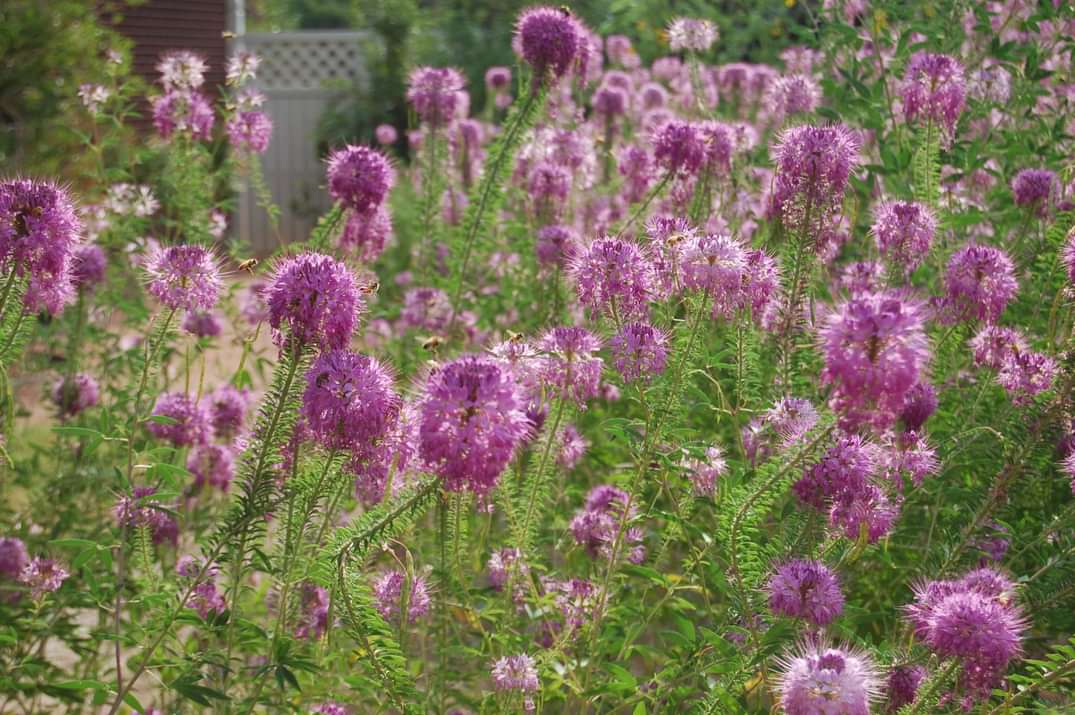What areas do you cover?
Due to high demand, we now limit our working range to the NW Denver area, including Wheat Ridge, Edgewater, and Lakewood. You can click this link to check if your address is within 15 minutes of RLD headquarters. Exceptions include:
- We are willing to travel through the greater Denver area for community or civic gardens. We can make the biggest impact by working with HOAs, cities, schools, and other institutions to design and create parks and gardens!
- If you contact us during fall or winter, which is when most people DON’T think to contact us, we are willing to travel further. If you’d like to get on our 2025 wait list now, and plan ahead to do a site visit this fall/winter, let us know. We do charge a travel fee for distances that are greater than 40 minutes round-trip.
- We’ll travel a little further – under 30 minutes from HQ – for crevice gardens! We love building crevice/rock gardens.
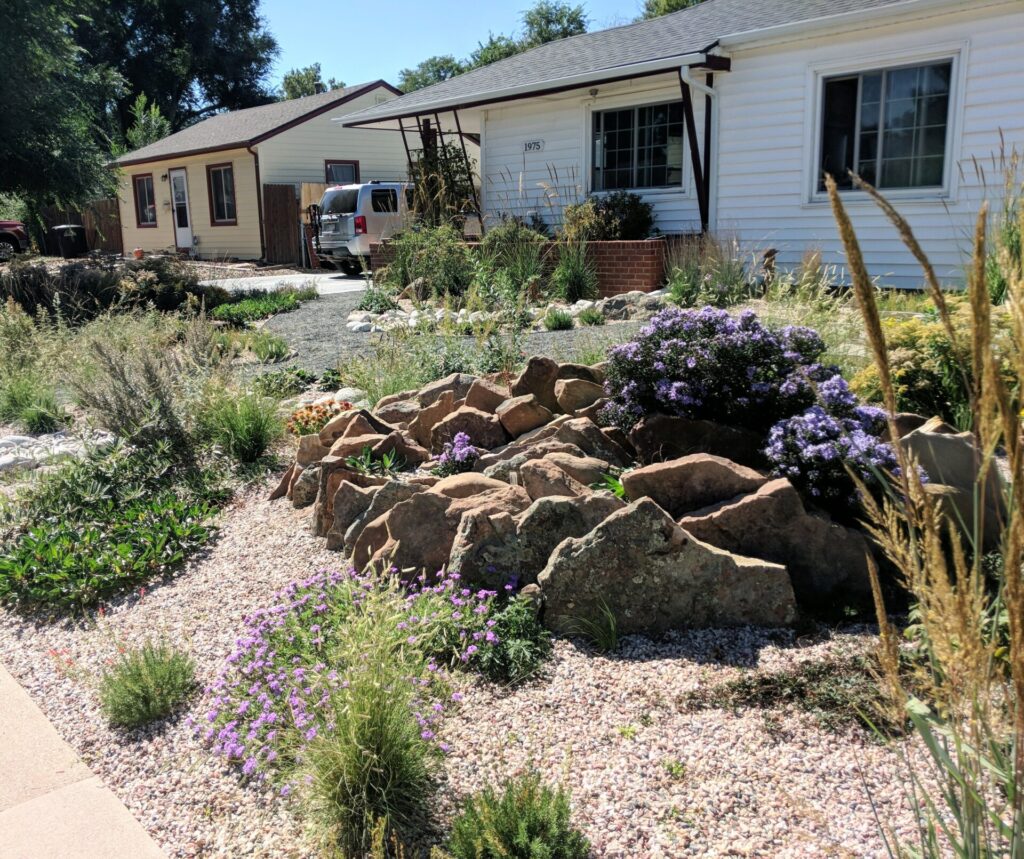
If you are outside of our working range, we can offer you three options that may be of service:
a) Our website has a list of ecological landscapers in the front range. You may be able to find one in your neighborhood.
b) If you’re willing to DIY the labor or find a landscaper in your neighborhood to help you, consider buying Ecological Landscaping in Colorado, our comprehensive DIY Guide. It’ll teach you how to design, plan, install, and maintain your native landscaping. We can also deliver native plants at wholesale prices to your door via our “Garden In A Truck Service.”
c) We offer virtual site visits, design, and consultation work. You’ll need to either DIY your design or hire a local landscaper to install it.
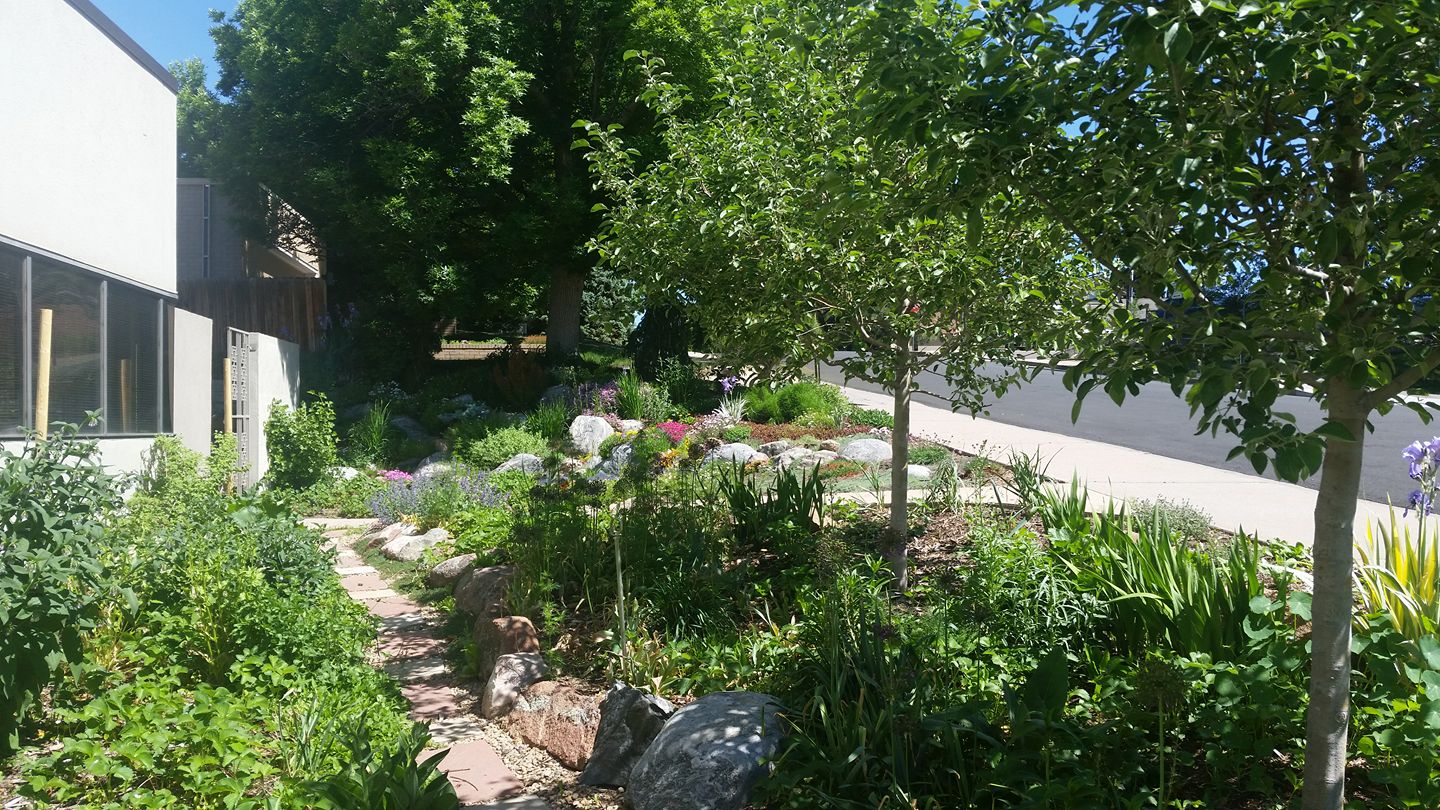
What is a landscape design?
A landscape design is a sketch of the vision for your landscape, with dimensions drawn to scale. It also includes notes on environmental factors, utilities, and existing patterns of use on the site.
Designs can be basic or detailed.

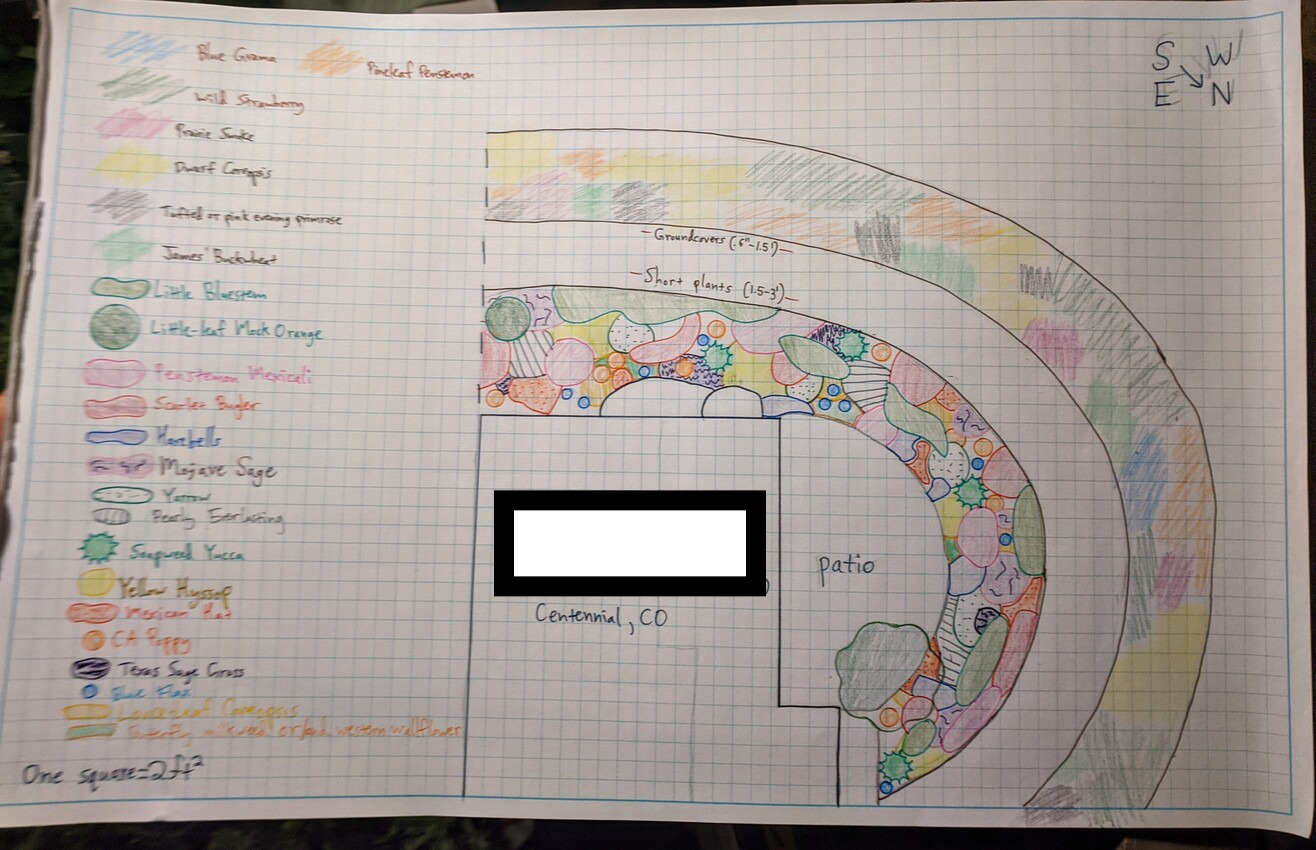
Design sketches can help us get inspired and catch potential problems and opportunities in advance. They are sometimes required by HOAs or grants.
A sketch isn’t always necessary for simple or evolving projects; whether or not to purchase one is up to you.
For many clients, we arrange the plants live with them instead of creating a detailed sketch. This tends to be more cost-effective, since we have to arrange the plants live at the site anyway. When clients want to DIY a project, we will generally either come to the site to arrange the plants or give the clients a list explaining how we would lay the plants out; this is more cost-efficient than making a detailed design.

Why plant native plants?
Local insects, birds, and other species evolved over millions of years to be inter-dependence with local plants. Here in North America, about 80% of suburbia is landscaped with plants from Eurasia, which is one reason why insect populations are rapidly declining. Local butterflies and bees depend on native grasses and wildflowers, and local birds feed on native plants and the bugs that live in them. Each part of the ecosystem – overstory and understory trees, bushes and flowers, grasses and groundcovers, and the many species that are interdependent with them – has a role to play in holding our local environment together.
Protected wilderness areas aren’t enough to preserve our ecosystem, because they’re small (only 12% of American land is protected) and disconnected. We need to restore native habitat in our urban and suburban areas in order for the web of life to survive.
Here in the Denver area, restoring native habitat means bringing back prairie and foothills plants that support countless local animals and insects. Before colonization, Denver’s key species included short grasses like buffalo grass and blue grama, wildflowers, and streamside cottonwoods.
Research by the entomologist Doug Tallamy has shown that native oak trees support over 500 species of caterpillars whereas ginkgos, a commonly planted landscape tree from Asia, host only 5 species of caterpillars. When it takes over 6,000 caterpillars to raise one brood of chickadees, that is a significant difference.
-The National Audobon Society

Prairie and foothills ecosystems are fantastic at storing carbon and surviving drought, so they are also critical for the long-term health of our cities.
Since native plants are naturally adapted to Colorado’s environment, they’re easy to work with, and require less water, fertilizer, and maintenance. They aren’t phased by Colorado’s extreme weather, and they support native species throughout those extremes (e.g. they may hold onto berries throughout the winter, which birds rely on). Native plants and lawns of native grasses require minimal or no supplemental irrigation after establishment, which saves you money. Native plant gardens are more resistant to pests and disease, and they’re great at keeping out noxious weeds.


RLD was incredible! Erin and the team completely transformed my yard in two days. Where there once was dead grass and in ugly chain link fence there is now an integrated design full of beautiful native plants. I’m excited for the fruit bushes to start bearing fruit! Can’t recommend enough..
-Robin
What are your Covid protocols?
We are vaccinated and boosted, and happy to wear masks when requested.
When is the best time to work with Restorative Landscape Design?
In general, winter is when we do design and planning; spring, summer, and fall are for planting. If you’re not installing automatic irrigation, spring (late April – early June) or fall (mid September – early November) are the best times for planting.
Planting a native grass lawn requires the most precise timing, because different types of grasses (cool-season vs warm-season) can only be planted at certain times.

What are your costs, processes, and options for different budgets?
Check out the homepage for info on our averages costs and typical processes. DIYers can find support on the Resources tab or by checking out the DIY Guide and the “Garden In A Truck.”
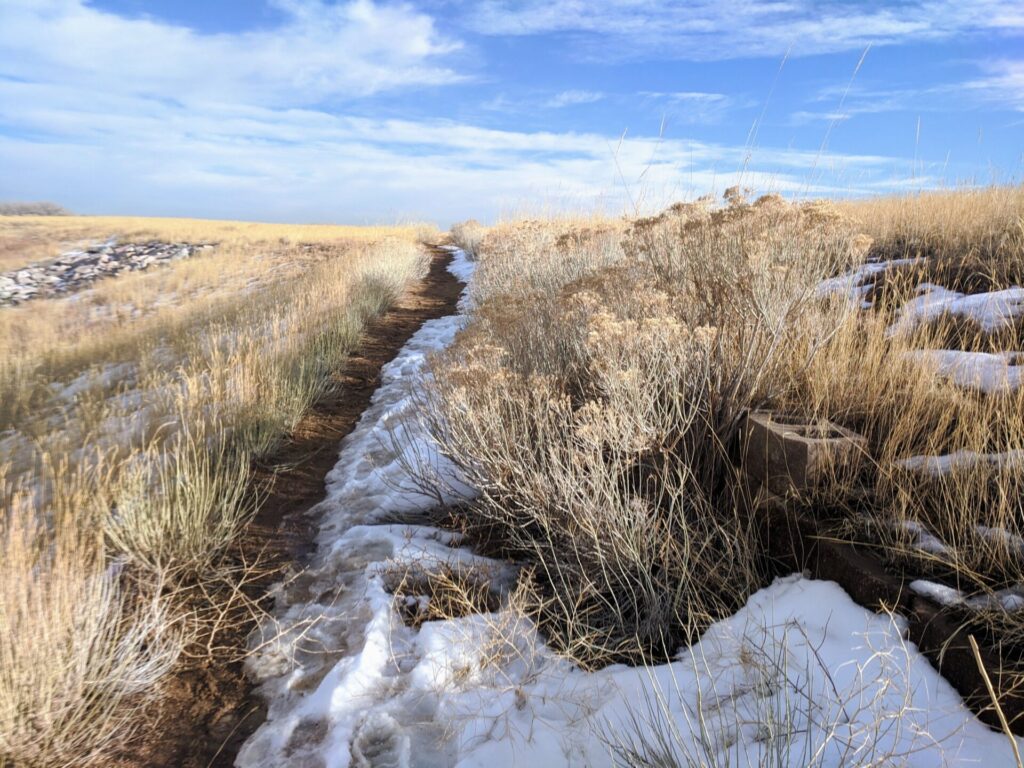
What local businesses and nonprofits do you work with and recommend?
Nurseries:
-
- The High Plains Environmental Center, which grows native plants from locally-harvested seeds,
- Little Valley Wholesale Nursery: our preferred wholesale nursery near Denver, with 141 acres in cultivation,
All the nonprofit members of the CO Native Plant Landscaping Coalition:
• Colorado Native Plant Society
• Colorado Wildlife Federation
• Denver Audubon and Audubon Rockies
• People & Pollinators Action Network
• Wild Ones – Front Range Chapter
Businesses:
-
- Ellie Roos of Wild Rose Landscaping: our beloved subcontractor,
- Sarah Scott: a Colorado realtor with a land ethic,
- Denver Permaculture Design Course: dedicated to training changemakers in theory and practice,
